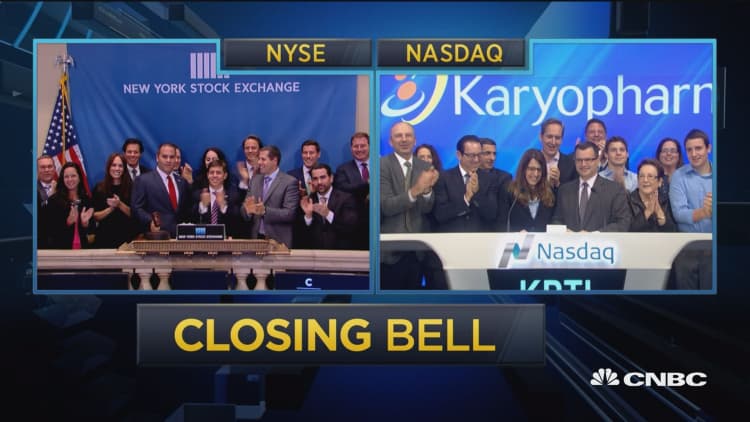
Man, this is a strange market. We have:
1) Generally positive economic news. Continued job growth. U.S. car sales beat expectations for October. Personal spending was also stronger in September. Even China reported better-than-expected manufacturing numbers. Sure, sub-2 percent GDP is a drag, but there's mostly more good news than bad.
2) Better-than-expected earnings reports (with 85 percent of the S&P 500 reporting, earnings are up 3.9 percent from the same period a year ago, the first positive quarter since the second quarter of 2015).
Those two factors would typically lead to a higher stock market.
But it's not. Because we have the election, the Fed and oil.
1) The election: The presidential vote is the biggest "known unknown" the markets have had to deal with since Brexit. Fortunately, it will be over soon.
The current thinking is that a "status quo" result — Clinton win, House stays Republican — will result in a modest 3 percent or so rally. If Trump wins, House stays Republican and Senate swings to the Democrats, most believe stocks could move down perhaps 5 percent, but the conviction is not high on this. Remember — this week the market already began the process of factoring in a Trump win.
2) The Fed: Few have noticed that while the election has roiled the markets this week, the Fed has had a profound influence on stocks for the last several months. Interest rate sensitive groups have been sold. Banks have outperformed. Ten-year bond yields have moved close to 50 basis points since bottoming in June, two-year Treasurys have moved more than 20 basis points. The markets are already doing much of the work for the Fed.
Barring some exogenous shock, the Fed is almost certain to move in December.
A 161,000 increase in the U.S. nonfarm payroll report was more than enough for the Fed to raise in December.
Remember, the Fed appears to have set a very low threshold for a rate hike. In its most recent FOMC statement, where it said, "The Committee judges that the case for an increase in the federal funds rate has continued to strengthen but decided, for the time being, to wait for some further evidence of continued progress toward its objectives." That one word — "some" — would seem to indicate it won't take much to hike.
While there is still more data in front of us — we will have the November jobs report before the December Fed meeting — it's hard to imagine the data falling apart so much the Fed will demur on this one.
What other factors might derail a hike? Perhaps a Trump victory.
3) Oil. The $50-$60 trading range everyone was expecting going into 2017 is now greatly in doubt. With oil down 10 percent in the last week and back in the $40-$50 range, this is having two negative effects: a) raising doubts that oil company earnings will finally turn the corner in Q4, and b) because oil is a proxy for global growth, it's again throwing a spotlight on poor prospects outside the U.S., something that several U.S. Industrial companies have already highlighted.
Fortunately, the elections and the Fed should be over in a month, and there will be a 2017 to focus on. Barring some unlikely outcomes, the main story next year will likely revolve again around central banks and how they will extricate themselves from the low interest rate environment.
As long as the economy continues to improve, and we don't have instability, the Fed could even hike twice next year. Throw in a little inflation, and you have a steeper yield curve. That would play into corporate funding costs. And who knows? The ECB may even finally start tapering its own bond purchasing program.
Hey, you can always dream.


